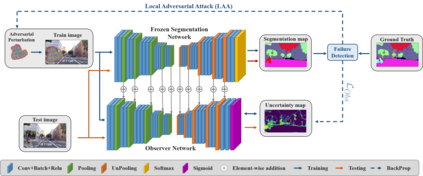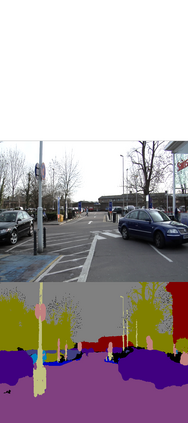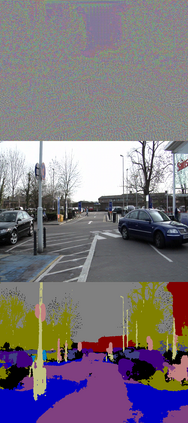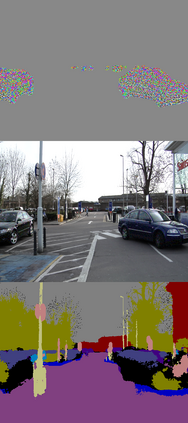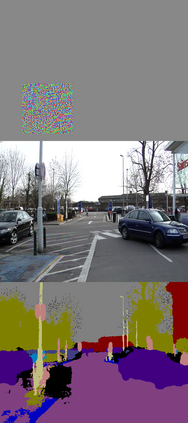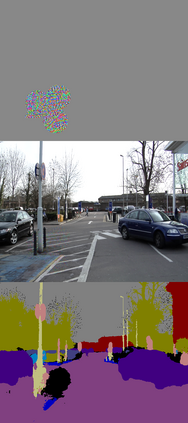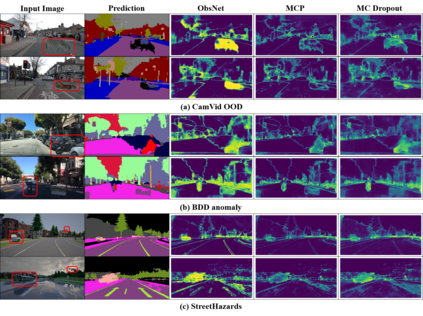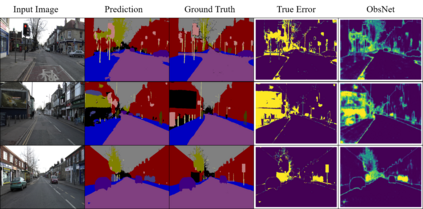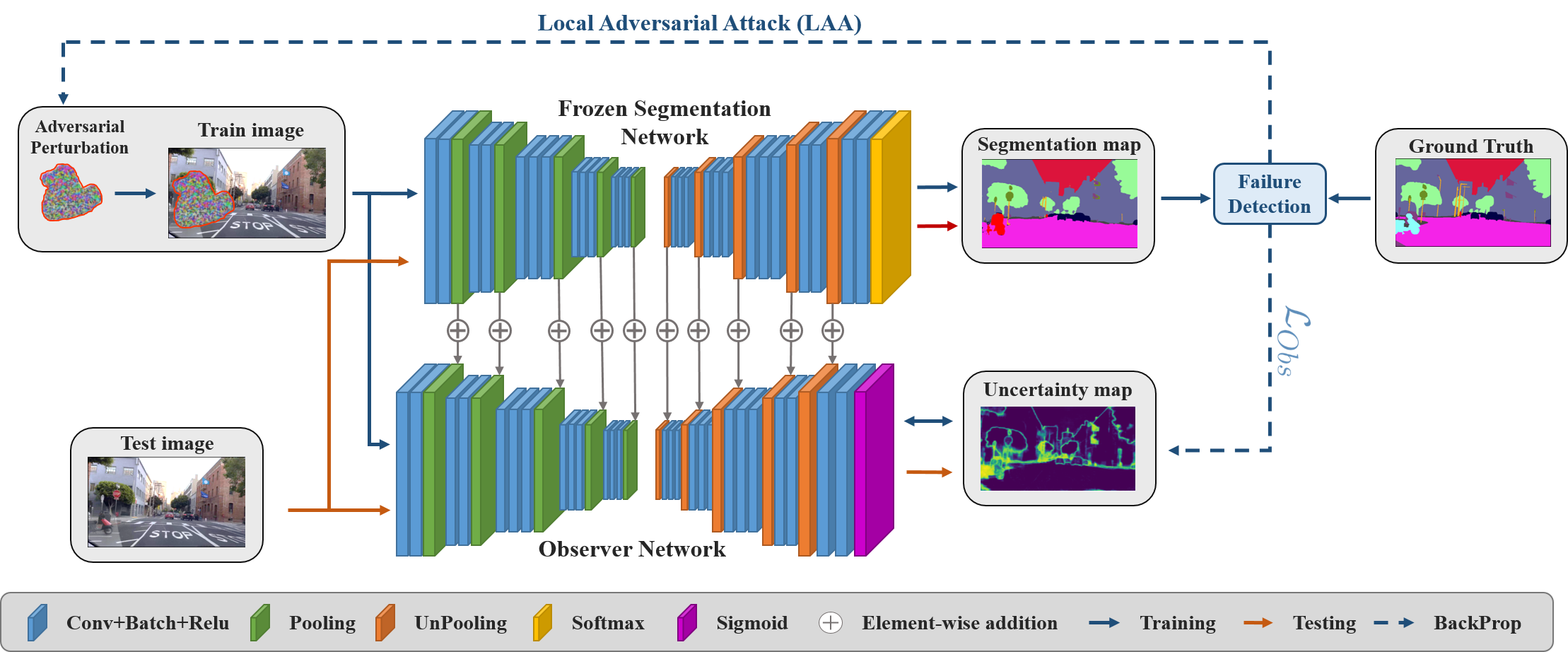In this paper, we tackle the detection of out-of-distribution (OOD) objects in semantic segmentation. By analyzing the literature, we found that current methods are either accurate or fast but not both which limits their usability in real world applications. To get the best of both aspects, we propose to mitigate the common shortcomings by following four design principles: decoupling the OOD detection from the segmentation task, observing the entire segmentation network instead of just its output, generating training data for the OOD detector by leveraging blind spots in the segmentation network and focusing the generated data on localized regions in the image to simulate OOD objects. Our main contribution is a new OOD detection architecture called ObsNet associated with a dedicated training scheme based on Local Adversarial Attacks (LAA). We validate the soundness of our approach across numerous ablation studies. We also show it obtains top performances both in speed and accuracy when compared to ten recent methods of the literature on three different datasets.
翻译:通过分析文献,我们发现目前的方法是准确或快速的,但并不是两种方法都限制了其在现实世界应用中的可用性。为了取得两个方面的最佳结果,我们建议按照四项设计原则来减轻共同的缺点:将OOD的检测与分解任务脱钩,观察整个分解网络,而不是仅仅观察其输出,利用分解网络中的盲点为OOD探测器生成培训数据,将生成的数据集中在图像中的局部区域以模拟OOD物体。我们的主要贡献是一个新的OOD检测结构,称为ObsNet,它与基于局部反动攻击的专门培训计划相关。我们验证了我们的方法在无数的分解研究中是否正确。我们还显示,与三个不同数据集的最新文献方法相比,它在速度和准确性两方面都取得了顶尖的成绩。

